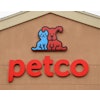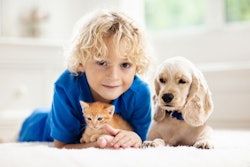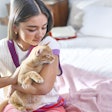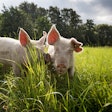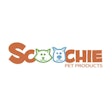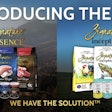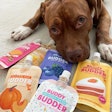
Five trends dominate the future of the dog, cat and other pet food markets in the United Kingdom, according to Mars Petcare ‘State of the Pet Nation’ report using data from Nielsen. While the report focused on Britain, the trends will likely influence pet foods around their world. Mars analysts calculated these trends' market share in the UK in 2020 and estimated how they would change by 2025.
1. Luxury moments – 2020 (12% UK pet food market share), 2025 (13%)
Customers in the UK may pay more for pet foods that follow human culinary trends, as long as those products strike a balance between healthy and decadent. For example, while Mars cat food sales in Britain have struggled over the past 12 months, sales of premium brand Sheba have led the category. Pet owners seek to indulge their pets and want so see them enjoy a premium food or treat without feeling guilty. Packaging imagery can accentuate the sense of quality by featuring wholesome ingredients. To stand out from conventional brands and encourage trading up, premium pet foods in retail spaces need high visibility, clear blocking and strong ranging, according to Mars analysts.
2. Natural nutrition – 2020 (12%), 2025 (16%)
Pet owners increasingly look dubiously upon artificial ingredients, genetically modified organisms, processed foods and any ingredient that’s hard to pronounce. On the contrary, claiming that pet foods are free from certain items, while containing a bare minimum of ingredients, resonates more with pet owners. To succeed with natural pet foods, the claims need to be prominently displayed while assuring pet owners of their nutritional value. Natural-claim pet foods now account for 12% of the market, Mars analysts wrote, after growing 14.8% during the past 12 months. They forecast natural pet foods to grow to 16% of the UK market by 2025, with a compound annual growth of 8%, delivering GBP166 million in incremental sales.
3. Science-led diets – 2020 (10%), 2025 (10%)
While pet owners don’t want long scientific sounding ingredient names, they do want to be assured that their pet foods provide proven nutrition. Especially as more dogs, cats and even small animals suffer from obesity and related diseases, pet food formulations that meet pets' specific dietary needs grow in market share. Likewise pet food diets made for young animals or seniors need to be backed by science.
4. Everyday enjoyment – 2020 (45%), 2025 (39%)
The rising trends of pet food in the UK make up a smaller percentage of the market than conventional varieties, which makes up 45% of the British pet food market, accounting for GBP1.3 billion per year in retail sales. However, the hot trends influence the mainstream in pet food as in many other aspects of life. What’s more, Mars’ analysts forecast conventional pet food to shrink to 39% of the UK market by 2024.
5. Treat my pet – 2020 (21%), 2025 (22%)
Pet treats differ from other pet food purchases in that they are often impulse items, while shoppers plan to purchase their pet’s food ahead of time. To capitalize on this brands need strong visibility both in-store and online, with clear segmentation and increased shelf space, according to Mars analysts. These marketing moves can help disrupt a shopper’s journey and encourage a splurge on treats. Seasonal events and birthdays also provide opportunities to boost treat sales.


